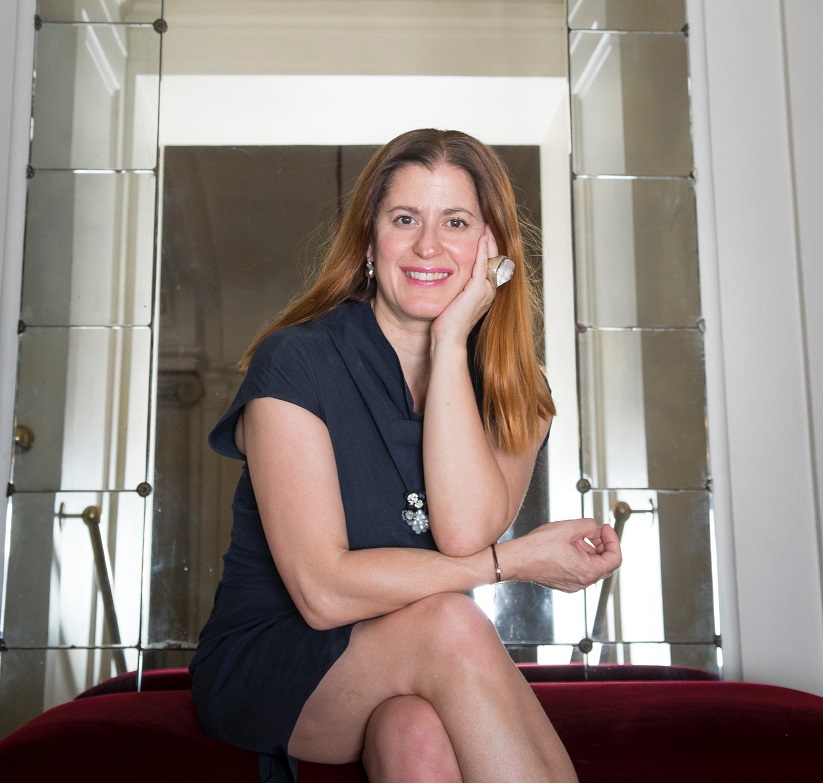Director Profile: Carmen Gloria Larenas
In 2019, you were named General Director of Teatro Municipal de Santiago, replacing Frédéric Chambert and becoming the first female director in the theater’s 165-year history. What does this responsibility mean to you? How do you advocate for other female leaders and artists?
I am sure other women before me were able to assume this position and that is why this responsibility means so much to me. Because I am a woman – and I say this without any bitterness – I must “fly” in my work, and not just “walk”, as may be enough for some men in this same position. That means doing my best, every single day, with one hundred percent focus on this incredible institution and its needs, problems, and challenges. Indeed, I feel a deep commitment to giving more and new opportunities to women in the arts. I feel especially responsible for decisions I make that affect other women artists. In arts, the artistic level or talent is the reason to give opportunities, above all. I think we do a very small favor to the cause of opening spaces for women if those opportunities are not built on quality.
A message: There is one specific message I want to send to my two daughters, Emilia and Colomba, and to women of the next generations to come: girls can do anything.
Why did you choose to commission Ayuso’s Nijinska for the 22/23 ballet season?
Because I know her talent and commitment to women and dance. She is creative enough and risky enough to take on a project like this one. I love her energy and enthusiasm. She knows what a classic fourth position is and also, how to deconstruct it. This combination is what I was looking for.
What has your experience been working alongside Ayuso? Why do you feel it’s important to portray and spotlight Bronislava Nijinska.
It was always a great experience. We have really connected since the first time we met in London. At that moment, I could appreciate her as a person and as a professional. She was very careful not to ask me for anything. I knew she was a choreographer and she knew I led a theatre with several dance projects. She never forced anything. For me, intelligence is an attitude. And Miss Ayuso has an attitude. In arts and in life.
Regarding Bronislava Nijinska: my passion for her started some years ago, reading about the Ballets Russes period, which I love and study. During a trip to Canada, I found unexpectedly in a bookstore, her memoirs. And I read it in two days. I was completely captured by her story and her time. In the end, it was crystal clear to me that she was brilliant as I always thought; and it was clear too that she chose to be in a second row, behind her brother, supporting him above all. Since then, she was always in my mind and I think she deserves recognition today. The book of Miss Garafola only confirms my choice.
Other dance works scheduled for this season include Cranko’s Romeo and Juliet, Luis Ortigoza’s La Bayadère, and Callas, the divine, a premiere by Annabelle Lopez Ochoa. As a former classical ballet dancer, how do you choose the ballet repertoire for a season? Similarly, how do you decide on opera, music, and theater programming?
This is a very interesting question. People used to think I decided everything by myself and this is far from the reality. I have a vision and dreams that make me define a route, but after that, I need to talk with the artistic directors of each ensemble – Orquesta Filarmónica de Santiago, Choir, and Ballet de Santiago – to know their visions and needs; and with my artistic team as well as the financial team. Some friends are also a very good source of ideas – conversations – critics. They are so generous with their ideas and opinions. Each project has so many aspects and it is impossible to “see” everything by myself.
I always say the final season is a complex shake. My recipe? To be inspired by the possibilities of innovation, even if it is difficult or risky; to find a logic for each project (it is not enough to “like” a piece or an idea or admire an artist); to put “nerves” in all the programming with big decisions as well as small details; to think in all the publics we want to come; and finally, fight a frequent answer: No. Not possible.
You’ve had several successes within your directorship thus far, including impressive digital performances during the pandemic. What are some of your current goals within the position, and what do you hope to achieve next?
My first goal today is to have a full house for each performance with the most diverse public and the best productions and artists on stage. To achieve this, I need to persist in sending the most important message these days: what we do is for all the public, without any distinction. The cultural spaces allow people to connect, to share, to find community. And these days, it is what we need as a society.
To achieve next? Very concrete: refound our School of Dance to improve the dance education in Chile with more prepared teachers and better-trained students. Better training, better possibilities, better dance. Here and abroad. This March, we will announce a historical partnership with one of the most important Opera Houses in the world. We will link our Schools of Dance. This will be a dream come true. A true legacy for Chile.



